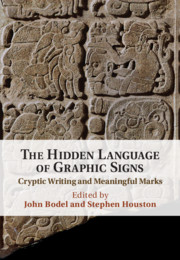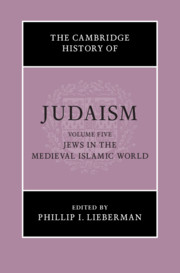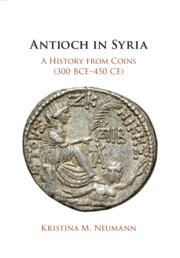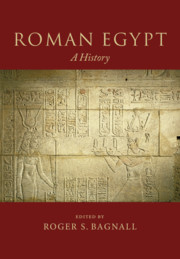Refine search
Actions for selected content:
23990 results in Ancient history
Copyright page
-
- Book:
- Julius Caesar and the Roman People
- Published online:
- 05 August 2021
- Print publication:
- 26 August 2021, pp iv-iv
-
- Chapter
- Export citation
Dedication
-
- Book:
- Julius Caesar and the Roman People
- Published online:
- 05 August 2021
- Print publication:
- 26 August 2021, pp v-vi
-
- Chapter
- Export citation
Abbreviations
-
- Book:
- Julius Caesar and the Roman People
- Published online:
- 05 August 2021
- Print publication:
- 26 August 2021, pp xii-xii
-
- Chapter
- Export citation
Copyright page
-
- Book:
- The Origins of Money in the Iron Age Mediterranean World
- Published online:
- 17 September 2021
- Print publication:
- 26 August 2021, pp iv-iv
-
- Chapter
- Export citation
Contents
-
- Book:
- Julius Caesar and the Roman People
- Published online:
- 05 August 2021
- Print publication:
- 26 August 2021, pp vii-vii
-
- Chapter
- Export citation
Contents
- from One - Rethinking the Origins of Money
-
- Book:
- The Origins of Money in the Iron Age Mediterranean World
- Published online:
- 17 September 2021
- Print publication:
- 26 August 2021, pp 1-1
-
- Chapter
- Export citation
General Index
-
- Book:
- Julius Caesar and the Roman People
- Published online:
- 05 August 2021
- Print publication:
- 26 August 2021, pp 682-690
-
- Chapter
- Export citation
Six - Conclusion
-
- Book:
- The Origins of Money in the Iron Age Mediterranean World
- Published online:
- 17 September 2021
- Print publication:
- 26 August 2021, pp 228-238
-
- Chapter
- Export citation
Acknowledgments
-
- Book:
- Julius Caesar and the Roman People
- Published online:
- 05 August 2021
- Print publication:
- 26 August 2021, pp ix-xi
-
- Chapter
- Export citation
Contents
- from Five - Money in the Iron Age Aegean
-
- Book:
- The Origins of Money in the Iron Age Mediterranean World
- Published online:
- 17 September 2021
- Print publication:
- 26 August 2021, pp 168-168
-
- Chapter
- Export citation
Appendix 3 - Some Important Dates in the Crisis Year 50 BC
- from Appendices
-
- Book:
- Julius Caesar and the Roman People
- Published online:
- 05 August 2021
- Print publication:
- 26 August 2021, pp 625-632
-
- Chapter
- Export citation
Chapter 9 - En Route to the Parthian War
-
- Book:
- Julius Caesar and the Roman People
- Published online:
- 05 August 2021
- Print publication:
- 26 August 2021, pp 488-579
-
- Chapter
- Export citation
Acknowledgements
-
- Book:
- The Origins of Money in the Iron Age Mediterranean World
- Published online:
- 17 September 2021
- Print publication:
- 26 August 2021, pp xvii-xx
-
- Chapter
- Export citation
Chapter 6 - No Return
-
- Book:
- Julius Caesar and the Roman People
- Published online:
- 05 August 2021
- Print publication:
- 26 August 2021, pp 258-320
-
- Chapter
- Export citation

The Hidden Language of Graphic Signs
- Cryptic Writing and Meaningful Marks
-
- Published online:
- 23 August 2021
- Print publication:
- 19 August 2021

The Cambridge History of Judaism
-
- Published online:
- 21 August 2021
- Print publication:
- 02 September 2021

Antioch in Syria
- A History from Coins (300 BCE–450 CE)
-
- Published online:
- 20 August 2021
- Print publication:
- 02 September 2021

Roman Egypt
- A History
-
- Published online:
- 19 August 2021
- Print publication:
- 09 September 2021
Frontispiece
-
- Book:
- Empire and Religion in the Roman World
- Published online:
- 26 August 2021
- Print publication:
- 19 August 2021, pp v-vi
-
- Chapter
- Export citation
Copyright page
-
- Book:
- Empire and Religion in the Roman World
- Published online:
- 26 August 2021
- Print publication:
- 19 August 2021, pp iv-iv
-
- Chapter
- Export citation
